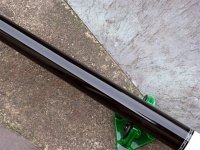robbycar
Registered
I have only made a dozen cues, and I have someone with an unusual request.
They want a totally black cue.
I have some ebony, but I think that a cored ebony cue might be too heavy.
Can I paint a cue black, and will the finish last? Should I try and stain the timber first? Maybe black polyeurethane paint followed by clear.
Rob.
They want a totally black cue.
I have some ebony, but I think that a cored ebony cue might be too heavy.
Can I paint a cue black, and will the finish last? Should I try and stain the timber first? Maybe black polyeurethane paint followed by clear.
Rob.
